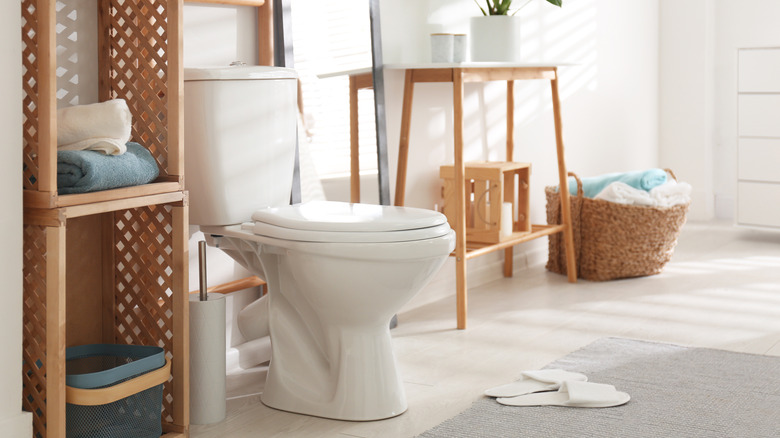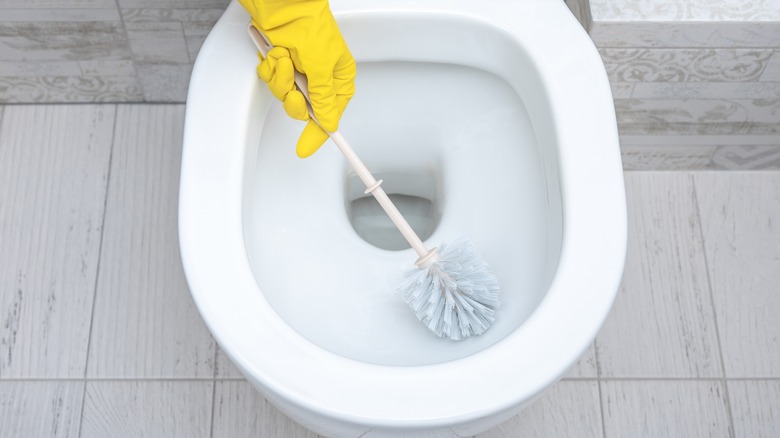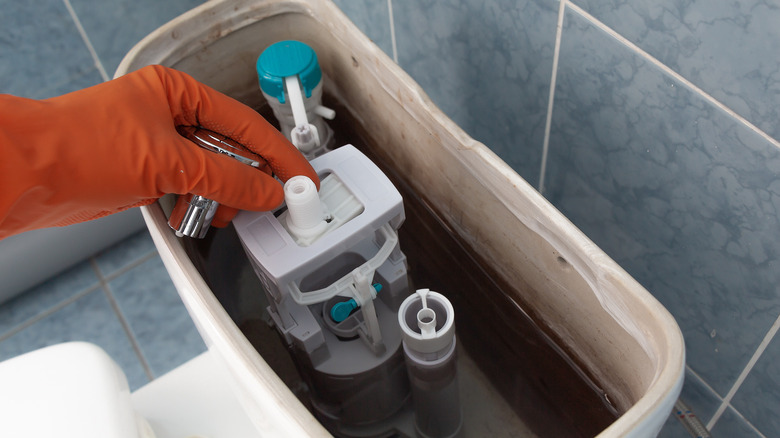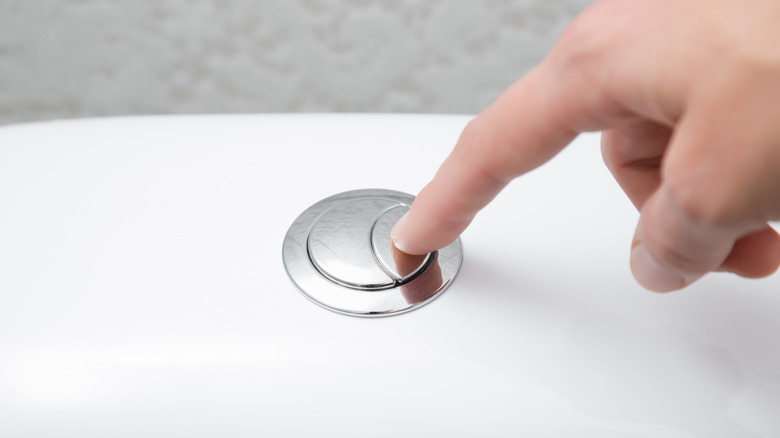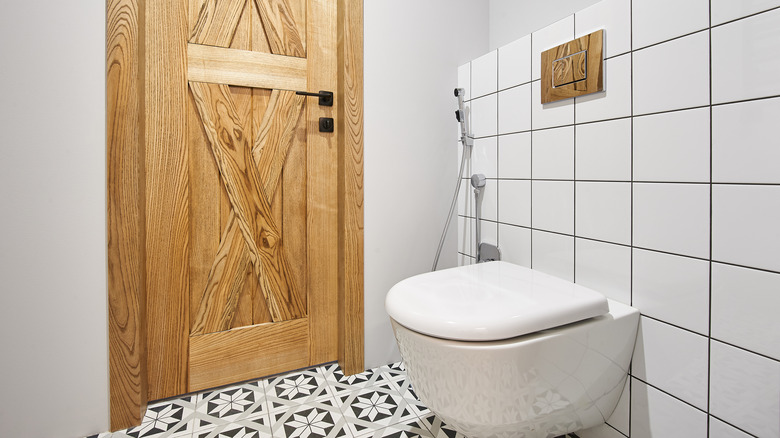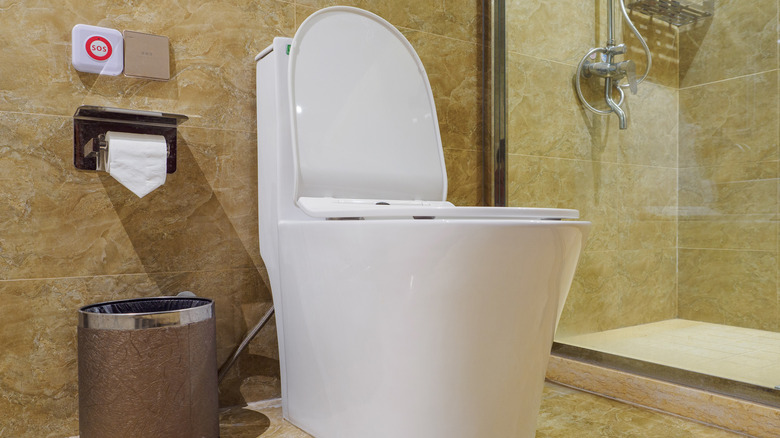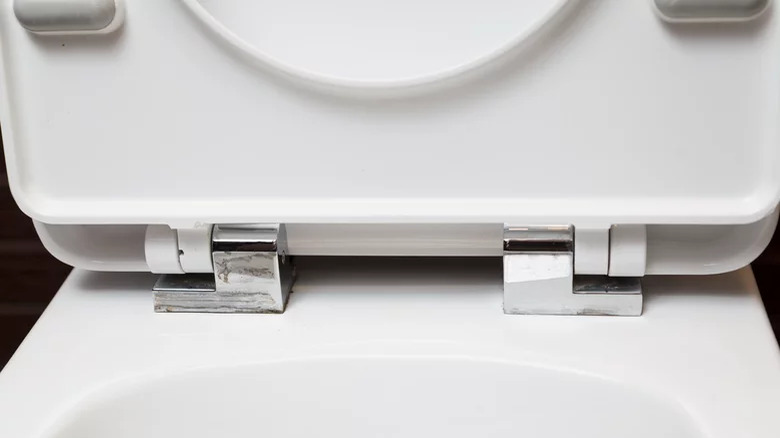6 Helpful Ways You Can Upgrade Your Toilet
We may receive a commission on purchases made from links.
You wouldn't exactly call the average toilet an object of great mystery. They are, for the most part, very simple devices, and after you've seen 100 or 1,000 nearly identical ones, it's easy to believe there's not a lot of room for improvement and innovation. But toilet manufacturers will find a way to make things more comfortable or more convenient for us if there's a competitive advantage in it, and there certainly is.
So, what are some interesting features that can upgrade your humble lavatory? Some are new innovations, some are expensive, and some are proprietary and so not available on every model. There are upgrades that will make cleaning them easier — such as antimicrobial coatings — while other enhancements focus on making them more aesthetically pleasing — such as models that hide their tanks inside the walls. Let's have a look at these hidden miracles of waste disposal and see what you might have been missing.
Easier cleaning with nonstick and antimicrobial coatings
You've never wanted technology to do your work for you quite so much as when it's time to clean the toilet. It's no fun, but you have to keep your toilet looking clean and, more importantly, actually being clean. You can have both with almost no effort.
This is all about coatings that are applied to the ceramic surfaces of your toilet during the manufacturing process or when cleaning. A DIY coating that greases the skids, so to speak, promises to keep toilet bowls cleaner via a two-part spray-on polymer. Taking inspiration from pitcher plants — which are carnivorous flora with slippery hair-like structures that help trap insects — the spray coats ceramics with microscopic fibers, and then coats those fibers with a slippery material that helps keep things moving. This has the potential to both keep toilets cleaner and to save water. The coating is available for $15 and up from the official spotLESS website.
Antimicrobial coatings applied during manufacture are very common among most toilet brands. Copper- and silver-based coatings, along with less common zinc oxide and titanium dioxide, are fairly effective, but can wear away with time and flushes. You can buy coating products to replenish the coating or add it to a toilet that didn't originally come protected.
Less malfunctions with flapperless flushes
Remember the last time you were sitting around thinking about your toilet's flapper, wishing you had some other option that's less prone to leaks and more prone to, you know, flushing stuff? Okay, maybe you haven't had this particular daydream, but maybe you should. Because in this wondrous age, you can have it all.
Flapper mechanisms are notoriously the part of toilets most prone to failure, and while no toilet failure is a good thing, the worst that will happen under most circumstances is excessive water use and a high water bill. More modern designs feature flapperless mechanisms that employ a fill valve far less prone to misbehavior. And if you aren't blessed with such a toilet, there's a good chance you can retrofit your toilet and get rid of the flapper. In fact, some early flapperless toilets will benefit from newer-generation fill valve mechanisms like this Glacier Bay and Niagra replacement on Amazon, which can refill your tank faster. Perhaps best of all, it's an easy DIY job that, in most cases, can be completed in less than an hour.
Save water with dual flush
By now, we've all seen and used pushbutton dual-flush toilets that can help save money by giving you a choice of flush intensity. The concept is as simple as can be: use the button designated for less water (it's often a smaller button, or has an icon indicating "less water" or "number one") to flush liquid waste, and the other button to dispose of solids.
This is often considered a feature only available with button-operated toilets, but you could also have the feature on your lever-actuated toilet. Rather than employing two pushbuttons, these tend to have two levers that look like one at a glance. These might be a good choice in a household with children who can potentially be confused by buttons, or members who are used to levers. If you want to convert your old toilet to dual flush, you can pick up a kit at Lowes for $35-75 that should do the trick.
A sleeker look with a tankless toilet
Some hidden features are hidden on purpose, and this one's a game-changer. Wall-mounted toilets are more flexible in terms of meeting code, more comfortable (for some, at least) by being installable at any height, and just generally sleeker by virtue of having their tanks concealed within the adjacent wall. And you're never going to have to clean that part, either.
These hidden-tank toilet models have a few advantages. Obviously, keeping the tank out of sight makes things look cleaner, and they certainly are easier to keep clean. They are also suitable for bathrooms in which space is tight, and for applications where you want to customize the seat's height. (Within code regulations, of course. Ahem.) And the keyword everyone values: legroom.
In-wall tanks can be expensive to install, always requiring minor construction, and sometimes fairly major effort to move wall studs, re-route water and electrical lines, and patch tile. It's one of the more involved upgrades you can make.
An easier clean with a skirted design
If you have a toilet designed for easy cleaning, you probably already know it, at least subconsciously. Many modern toilets have one-piece designs, which eliminate a nook that's difficult to clean properly and a joint that could possibly (if rarely) fail, resulting in a leak.
However, toilets with skirted trapways take that concept up a notch. The "skirting" is simply a smooth surface that hides the underlying pipes connecting the toilet bowl and the drain line. The end result is a smooth toilet design without the usual ridges and outlines. That means you can simply wipe it down on chore day without having to dip and curve to get accumulating dust. That alone can make the upgrade worth it for some folks. It also has a sleeker appearance thanks to its streamlined, uniform shape, elevating the look of your bathroom. And the best part? They typically cost the same as a regular toilet, with some models starting at $200.
Catch grime with a removable seat
Even if you have the simplest, smoothest toilet ever made, you'll still have one frustration to deal with: cleaning around the base of the seat, where it connects to the toilet. But there might be good news for you, so get the champagne ready — it's probably far easier than what you've been doing.
If you're like most people, champagne is the last thing you're thinking of when you clean around your toilet seat's hinges. You're probably thinking more of engineering ... conforming the shape of your cleaning tools to the impossibly small and oddly shaped areas in and around the juncture of toilet and seat.
If you ever considered removing the toilet seat, you probably bailed out after the thought of tracking down the right screwdriver and wrench. But if you upgrade to an easy-release seat, you'll no longer have to mess around with that. All you'll have to do is unclip the hinges from their connectors and slide the seat off, making cleaning a snap.
